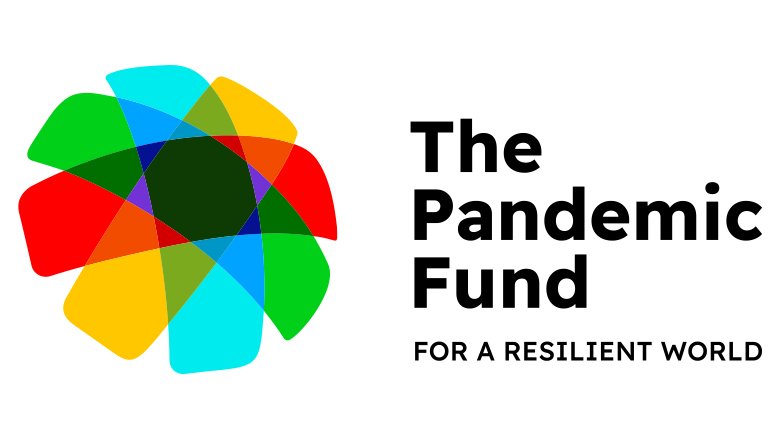This is one of 19 projects to which a grant was awarded by the Pandemic Fund under the First Call for Proposals. For information on the full set of projects supported by the First Call for Proposals, please refer to this press release.
Background
As a landlocked country with porous and extensive borders, with high rural-to-urban migration, and a unique ecosystem threatened by climate change and deforestation, Paraguay has prioritized pandemic prevention, preparedness, and response (PPR) using a One Health approach. The Strengthening Pandemic PPR in Paraguay Project will be carried out as a partnership between the Ministry of Public Health and Social Welfare in coordination with four Implementing Entities (IEs) including FAO, the Inter-American Development Bank (IDB), UNICEF, and WHO. The Project is supported by an $11 million grant from the Pandemic Fund which is expected to leverage an additional $10 million in co-financing and $10 million in co-investments to help strengthen disease surveillance, enhance laboratory systems, build capacity, as well as ensure cross- sectoral collaboration for the country’s pandemic PPR efforts.
Paraguay has a significant burden from infectious diseases, including chikungunya, Chagas, and tuberculosis, waterborne-related diseases, and zoonotic diseases such as avian influenza. These remain a major threat to both animal and human health as well as the economy. Additionally, Paraguay’s vulnerability to the impacts of climate from extreme weather events and its high incidence of poverty in rural areas, limit the country’s capacity to address these vulnerabilities and development challenges. Paraguay’s recently awarded grant from the Pandemic Fund, combined with co-financing and co-investment, will bolster efforts to address the lessons learned from the COVID-19 pandemic experience and create a more resilient and adaptable health system.
Project objectives
The project aims to strengthen critical PPR functions to address gaps identified in the 2022 State Party Self-Assessment Annual Report (SPAR) and to reduce the health, social and economic impacts of future pandemics. The gaps relate to early warning, surveillance systems, and preparedness to respond to health emergencies, as reflected in Paraguay’s medium compliance rate of 62% across the 15 International Health Regulations (IHR) core capacities.
Implementation arrangements and key components
Led by the Ministry of Public Health and Social Welfare (MSPBS), this project will coordinate closely with other government entities and technical bodies integral to the One Health approach. This includes numerous agencies in health (human, animal, and environmental), agriculture, customs, and civil society.
The Project has five key components. Implementing Entity support is indicated under each component.
Developing PPR capacities for digital surveillance of public health emergencies of national and international concern (PHENC, PHEIC). The Project will develop/modernize and implement protocols, guidelines, and training on digital surveillance systems for early detection and management of health emergencies and disasters (IDB).
Integrating information management capacities of human, animal, and environmental health laboratories at all levels. The includes purchase of informatic equipment, support to knowledge exchange of zoonosis management (detection, monitoring, and analysis) across sectors and synchronization of laboratory diagnostic protocols with the national surveillance framework (FAO).
Strengthening antimicrobial resistance (AMR) surveillance for human, animal, and environmental health in accordance with One Health. Activities support the implementation of the National AMR Plan by connecting with the capacity-building efforts of digital surveillance and laboratory integration (FAO).
Investing in human, animal, and environmental health agency coordination for cross-border control. The Project will establish inter-institutional coordination of border patrols (Migration, Customs, Public Forces) and strengthen the capacity of 13 priority points of entry to predict, track, and monitor potential disease threats aligned with IHR and the country’s Border and Mobility Management framework (WHO).
Building capacity in community surveillance and early detection of (re)emerging diseases. With a special focus on indigenous communities and displaced populations, the project will standardize a community surveillance framework inclusive to water-borne, environmental, and (re)emerging diseases, and develop a digital system to monitor pathogenic misinformation and social behavior in real time to strengthen community surveillance, risk information, and community participation (UNICEF).
Expected outcomes
Held accountable by the Project’s monitoring and evaluation framework, the expected outcomes include:
Improved capacities for PPR for digital surveillance of public health emergencies of national and international concern at national, regional, and local levels.
Strengthened detection, diagnostic and integrated information management capacities of human, animal and environmental health laboratories at all levels.
Strengthened integrated surveillance of AMR that includes human, animal and environmental health.
Intensified cross-border control measures in coordination with agencies to prevent and contain the spread of cross border disease outbreaks.
Strengthened community surveillance capacities of epidemic PPR with direct inclusion of indigenous communities and displaced populations.
Key Financial Statistics
| Amount Approved (US$) | Total Co-financing (in kind & in cash) (US$) | Total Co-investment (in kind & in cash) (US$) |
| 10,584,929 | 10,364,943 | 10,110,138 |
For media inquiries: Anita Rozowska - arozowska@worldbankgroup.org
For general inquiries: the_pandemic_fund@worldbank.org

